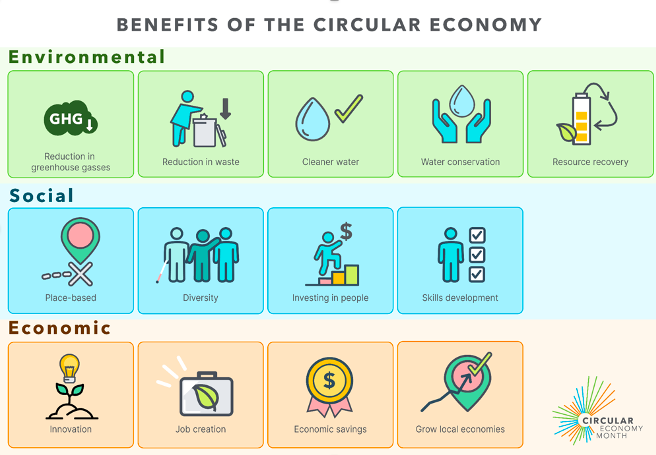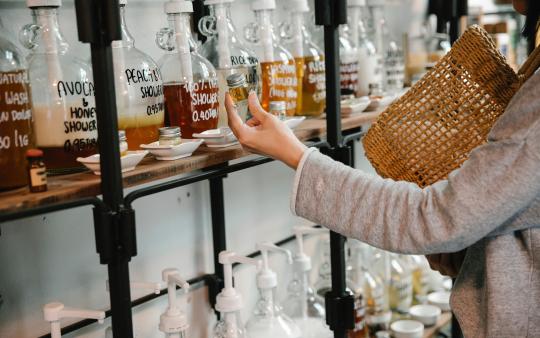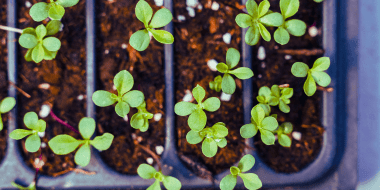Engaging in a circular way of being is an important approach toward saving Mother Earth so that future generations can enjoy what she has to offer. It’s time to hit the reset button on how we manage our resources. With a great population of young North Americans yearning for stronger policies and tangible actions in the fight against climate change, there’s no better time for parents to teach their kids about a circular economy and its benefits. It’s time to redefine value and prioritize environmental protection and social well-being. Follow these 10 easy steps towards a more circular life.
What is a circular economy?
The circular economy is an economic model that aims to reduce waste and promote sustainability by keeping resources in use for as long as possible. It is becoming increasingly important for individuals, businesses, and governments to adopt this model to mitigate the negative impacts of human activity on the environment and preserve natural resources for future generations.

Parents play a crucial role in shaping the values and behaviours of their children, and teaching them about the circular economy is one way to instill a sense of responsibility and awareness of the ecological impacts of their actions.
LESSONS KIDS LEARN BY PARTICIPATING
Encouraging responsible consumption
By teaching children about the circular economy, parents can encourage responsible consumption habits, such as buying products made from sustainable materials, recycling, and repairing and reusing items instead of throwing them away.

Reducing waste
Children who understand the concept of the circular economy are more likely to be conscious of their consumption and waste production. They may be more inclined to reduce their use of single-use plastics, for example, or to compost food scraps rather than throw them in the trash.
Fostering creativity and innovation
The circular economy relies on creative solutions to reduce waste and extend the life of products and resources. By teaching children about this concept, parents can encourage them to think outside the box about how to reuse or repurpose items that would otherwise be discarded. Why recycle a cardboard egg carton when it’s already a biodegradable seedling planter?
Supporting a sustainable future
By teaching children about circularity, parents can help them understand the importance of preserving natural resources and reducing waste, encouraging them to play an active role in building a more sustainable world, and in moving past consumerism’s one-and-done approach.
OCTOBER IS CIRCULAR ECONOMY MONTH!
The Circular Innovation Council, Canada’s leader in circular advocacy and advancement, is paving the way to increase awareness and education around what a circular economy is, and what it means for Canadians. We believe that we are all stakeholders in Canada’s climate future, able to make an impact from coast to coast to coast. So last year, we launched Canada’s first-ever Circular Economy Month—an evolution of our more than 20-year-running Waste Reduction Week campaign.
Circular Economy Month is Canada’s first-ever public awareness campaign dedicated to educating and empowering people to support a circular economy, a concept that delivers on our most important values: protecting the planet and prioritizing people. Creating nationwide conversations on Canada’s need to adopt a new economic model that can deliver environmental and social value, the campaign is succeeding in its goal to educate Canadians about the benefits of a circular economy.

Here’s what's happened in Canada so far:
- More than 50 governments across Canada recognized October as Circular Economy Month including the City of Toronto, Province of British Columbia, City of Calgary, City of Vancouver, City of Victoria, Province of Newfoundland & Labrador, City of St. John's, City of Regina, Government of Nunavut, and more. A video declaration by Steven Guilbeault, Canada’s Minister of Environment and Climate Change,1 reaffirmed October as Circular Economy Month
- 15 officially registered public landmark lightings celebrating the occasion, including Toronto’s CN Tower, Kingston City Hall, Toronto City Hall’s 3D TORONTO sign, the Calgary Tower, and Wellington County Museum & Archives
- Over 6,000 mentions of the #CircularEconomyMonth campaign on social media and in the news
- Over 60 diverse events registered as part of Circular Economy Month, ranging from repair cafés, community meetings, educational webinars, and film screenings at both Toronto’s Hot Docs and other local venues, to community clean-ups, clothing swaps, eco-fairs, waste management facility tours and more. October also saw hundreds of unregistered local and community-run events related to sustainability and circularity throughout the month, amplifying the message even more
Meeting Canada’s climate change commitments and broader sustainability goals requires major economic changes enacted by all parts of society. Circular Economy Month is designed to help consumers, government, businesses, and educational institutions better understand the difference between our current linear economy and one designed within our planetary boundaries. This understanding is imperative to addressing the challenges we face.
Circular Economy Month in the U.S.
In the U.S., several companies have started to seek out and adopt circular practices to support a resource-positive future. Starbucks has invested $10 million in Circular Services—the largest privately held recycling company in the U.S., which uses advanced technology to sort, process, and reuse commodities that have traditionally been sent to landfill.2 The American government has also encouraged net-zero circular economy innovation through round table discussions that challenge business, policy, and community leaders to adopt and accelerate circular solutions.3
10 WAYS TO TAKE ACTION FOR A CIRCULAR ECONOMY
The concepts of the circular economy represent big and bold steps, but they are actioned by everyday shifts in what and how we produce and consume. People everywhere can make their own changes to encourage the transition to a more circular lifestyle.

First, decide whether you really need to buy new; rethink the need—is it a need or a want? If it’s a need, you can vote with your dollar to support innovation and further development of circular solutions. Prioritizing products that are designed to be reused, refurbished, repaired, and dismantled is a great place to start, as is supporting companies that will lease or rent their products (e.g., as-a-service companies), or those that offer to take their items back for recycling after use. The most important thing is to teach our children.
1. Model sustainable behaviour
Children learn by example, so parents need to model sustainable practices in their daily lives. For example, parents can demonstrate recycling, composting, upcycling, and conscious consumer habits like buying products made from sustainable materials and avoiding single-use plastics.
2. Engage in hands-on activities
Parents can engage their children in hands-on activities that teach them about the circular economy. For example, they can involve their children in repairing and repurposing old items around the house, or in gardening and composting
3. Watch educational videos
There are many educational videos available online that explain the concept of the circular economy in age-appropriate ways. Parents can watch these videos with their children to help them understand the importance of reducing waste and preserving natural resources.
4. Read books about sustainability
There are many books available that teach children about sustainability. Parents can read these books with their children to help them learn about the importance of protecting the environment.
5. Discuss current events
Parents can use current events, such as reports on the impacts of climate change, as springboards for discussions about the circular economy and sustainability.
6. Get involved in community initiatives
Parents can get involved in community initiatives supporting a circular economy, such as community composting programs or recycling drives. By involving their children in these activities, they help them develop a sense of personal responsibility and awareness.
7. Spearhead your own event
You can organize your own event, like a shoreline cleanup, or a pop-up clothing swap. You can download an event organization kit from our website (circulareconomymonth.ca), so it’s easier than you think. Post your event on our website and we’ll even help you promote it!
8. Advocate for a circular economy curriculum
The Circular Economy Month website offers a bilingual downloadable kit for schools to help plan activities, conduct a waste assessment, and implement a waste reduction action plan. Encourage teachers to incorporate these materials into their curriculum. It’s easy to use and filled with helpful resources from experts, including through our partnership with the LEGO Replay for Schools program.4
9. Take the food waste pledge
See what you and your child already know about food waste by filling out the short quiz on our website. Then choose an action you want to take and make the pledge together.
10. Advocate for action
Multiply your efforts by spreading the word! Write your local municipality to have them proclaim Circular Economy Month. Get a local monument or landmark to light up blue and green to mark the occasion and spread awareness.
Teaching children about the circular economy is an ongoing process that requires caregivers to model sustainable behaviour and engage their children in educational activities and resources. That’s why we’ve created resources ready for use on our website.
We invite you to join the campaign to make a brighter future—join us for Circular Economy Month!
For references visit ecoparent.ca/EXTRAS/FALL23









